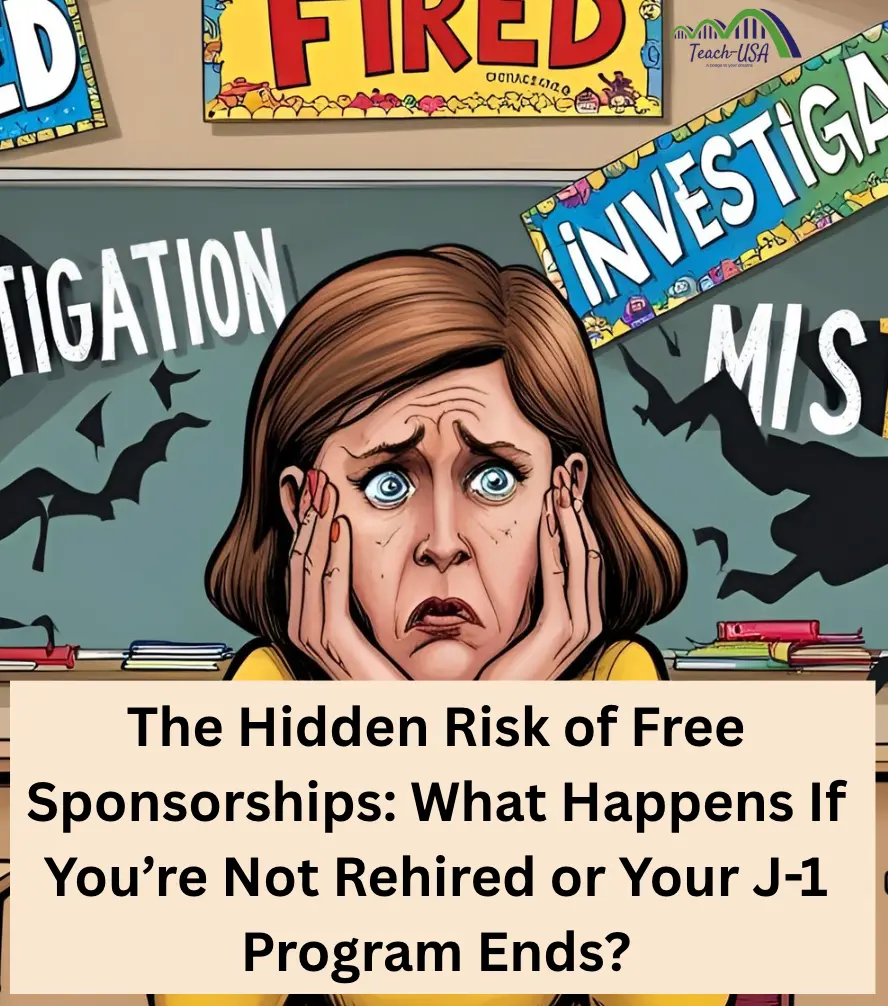Many international teachers dream of teaching in the U.S. and are drawn to “free sponsorship” programs that promise no upfront fees and direct placement. These offers sound ideal — especially if you’re eager to get started without the financial burden. But there’s something these programs rarely emphasize: what happens if your contract isn’t renewed, you’re let go mid-year, or your J-1 program simply ends.
If you’re currently under a no-fee teaching exchange program, this post is for you.
Free Doesn’t Always Mean Secure
Free visa sponsorship programs may provide:
- No initial placement or program fees
- Direct assignment to a U.S. school
- Minimal paperwork and support with arrival
But the downside? If your school decides not to renew your contract or if your employment is terminated, your ability to stay in the U.S. can be at serious risk — and you may not have many options left. Unlike paid facilitation services or direct school sponsorships where you may have more control, free sponsorship models typically hold your visa, which limits your flexibility if something goes wrong.
Non-Renewal or Termination: You’re On a Clock
Here’s what typically happens if you’re not rehired or your contract is terminated mid-year:
- Your J-1 visa can be terminated almost immediately.
- You may have as little as 15 days to leave the U.S.
- You cannot legally stay and look for a new job unless you already have a transition plan in motion.
The emotional and financial strain of a sudden job loss can be overwhelming — especially if you’re living alone in a foreign country with no backup plan.
When Your J-1 Program Ends Normally
Even if everything goes smoothly and your program reaches its natural end:
- You only have a 30-day grace period to depart the U.S.
- You cannot work during this grace period.
- You cannot transfer sponsors after your program ends unless it was processed earlier.
- If you’re subject to the 212(e) two-year rule, you may need to return to your home country before pursuing a different U.S. visa or green card.
How to Protect Yourself — Starting Now
Whether you’re in year one or nearing your program’s end, it’s wise to think long-term.
Understand your visa terms
Know your program end date, grace period, and 212(e) rule status.
Explore long-term immigration options early
Consider a J-1 waiver if you qualify through family hardship or U.S. citizen dependents, an H-1B transfer if a district is willing to sponsor you directly, or a National Interest Waiver (NIW) if you’re working in high-need areas.
Build a financial cushion
Prepare for unexpected gaps in income or sudden transitions.
Have a legal and professional support system
Don’t wait until the last minute. Find trusted immigration guidance to help you assess your future.
Your Status Is Not Automatic — It’s Strategic
The truth is: many teachers assume they’ll have time to figure things out later. But when your visa is tied to a sponsor that may not renew you — or if your J-1 program ends with no clear transition — time runs out fast. So while “free” may help you get here, only you can take the next step to stay here, legally and securely.
Need Guidance on What’s Next?
If your J-1 contract is ending, if you’re unsure about your status, or if you want to explore your long-term stay options — we’re here to help. Please email apply@teach-usa.net with your concerns.
Sources for Further Reading:
- Exchange Visitor Visa (U.S. Department of State)
- Two-Year Home-Country Physical Presence Requirement
- Exchange Visitor Program Regulations
- Change of Sponsor Rules
- 8 CFR § 214.2(j)(1)(ii)


Im in my third year of teaching in the US with no assurance to get an extension. My vida will expire on June 30, 2026. I need help to continue teaching here.
Please email: apply@teach-usa.net and share your issue there. Subject: Options.